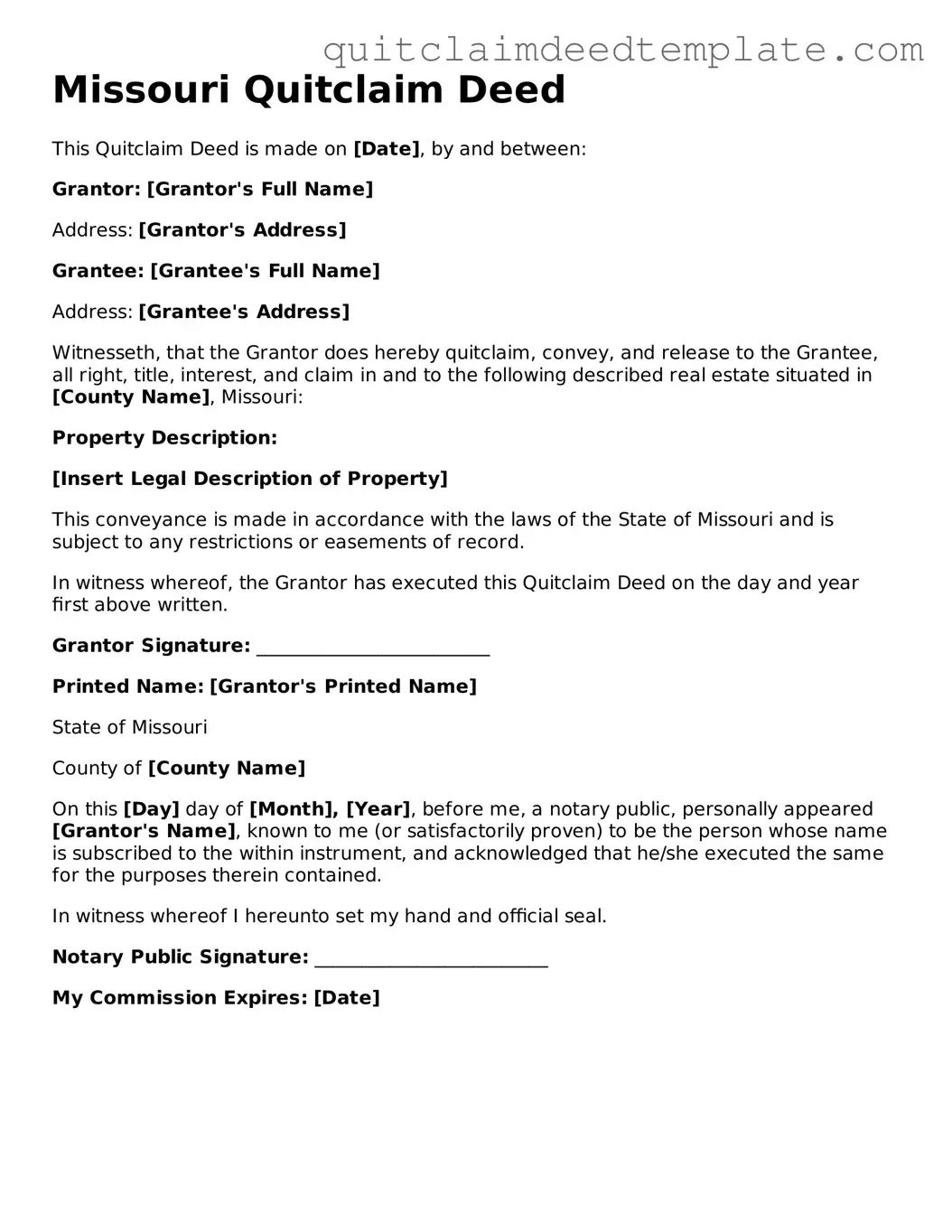The Warranty Deed is a common document used in real estate transactions. Like the Quitclaim Deed, it transfers ownership of property from one party to another. However, the key difference lies in the guarantees provided. A Warranty Deed offers a promise that the title is clear and free of liens, while a Quitclaim Deed does not provide any such assurances. This means that if any issues arise with the title, the grantee may have no recourse against the grantor.
The Bargain and Sale Deed is another document similar to the Quitclaim Deed. It transfers property ownership but implies that the grantor has some rights to the property, even if it does not guarantee a clear title. This type of deed is often used in foreclosure sales and can be a middle ground between a Quitclaim Deed and a Warranty Deed, offering some level of assurance without the full protection of a Warranty Deed.
A Special Purpose Deed, such as a Deed of Gift, also shares similarities with the Quitclaim Deed. This document is used to transfer property without any monetary exchange, often as a gift. Like a Quitclaim Deed, it does not guarantee the title. The recipient accepts the property with all its potential issues, making it essential for the parties involved to understand the implications of such a transfer.
The Trustee’s Deed is used when property is transferred by a trustee, often in the context of a trust or bankruptcy. Similar to a Quitclaim Deed, it does not provide warranties about the title. Instead, it simply conveys the property as per the terms of the trust or court order, making it a straightforward way to transfer ownership without title guarantees.
An Executor’s Deed is issued when a property owner passes away, and their estate is being settled. This deed transfers property from the deceased to their heirs or beneficiaries. While it serves a similar purpose to a Quitclaim Deed in that it transfers ownership, it typically does not guarantee a clear title either, depending on how the estate is managed.
A Deed in Lieu of Foreclosure is another document that resembles the Quitclaim Deed. This type of deed allows a borrower to transfer the property back to the lender to avoid foreclosure. Like the Quitclaim Deed, it does not guarantee the title, and the lender accepts the property "as is." This can be a beneficial option for borrowers looking to mitigate the impact of foreclosure on their credit.
A Mineral Deed specifically transfers rights to minerals and resources beneath the land. While it serves a distinct purpose, it shares the same lack of warranties as a Quitclaim Deed. This means that the buyer accepts the mineral rights with any existing issues, making it crucial for parties to conduct thorough due diligence before proceeding.
Finally, a Leasehold Deed conveys a leasehold interest in a property rather than full ownership. While it is not a direct ownership transfer like the Quitclaim Deed, it similarly lacks guarantees about the title. This document allows tenants to secure rights to use a property for a specified period, often without the protections afforded by other types of deeds.
